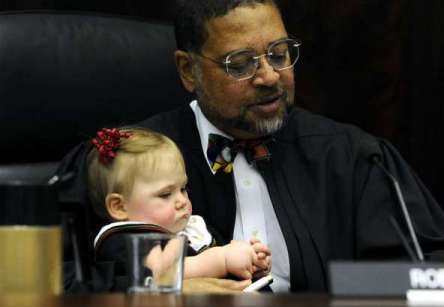
Yesterday, Donald Trump made an appeal to conservative voters by releasing his short list of nominees for the Supreme Court (and pledging to nominate only from that list). Ted Cruz, a serious Republican contender (and runner-up) in the primary election had previously refrained from endorsing Trump; but this list and pledge were enough to get him on board.
Let’s take a quick look at the potential nominees and our estimation of their judicial philosophy:
1) Mike Lee (Right)
A current U.S. Senator from Utah, Mike Lee is a staunchly conservative (and liberty leaning) Republican who greatly values the constitution. He has a law degree from Brigham Young University in Utah, and has worked as an assistant U.S. attorney and as a law clerk for Supreme Court Justice Samuel Alito.
2) Neil Gorsuch (Right)
A federal judge on the U.S. Tenth Circuit Court of Appeals, Gorsuch was nominated in 1990 by then president George H.W. Bush. He has earned his Juris Doctorate from Harvard Law and his D.Phil from Oxford University.
3) Margaret Ryan (Right)
A federal judge serving on the U.S. Court of Appeals for the Armed Forces, Ryan served as an officer in the US Marines from 1987-1999. She received her J.D. from the University of Notre Dame and was a clerk for Supreme Court Justice Clarence Thomas for two years.
4) Robert Young (Right)
The current chief justice of the Michigan Supreme Court; he received his J.D. from Harvard Law School in 1977. Justice young is an originalist, believing: “judges should apply the Constitution and laws as written and that judges have no authority to impose their policy preferences on those that the People have written into their Constitution or their elected representatives have enacted into law.”
5) Frederico Moreno (Center-Right)
A U.S. District Court Judge for the Southern District of Florida, Moreno received his J.D. from the University of Miami school of law in 1978. He was nominated by President George H. W. Bush in 1990.
6) Amal Thapar (Center-Right)
A federal judge for the U.S. District Court for the Eastern District of Kentucky, Thapar received his J.D. from Berkeley in 1994. He was nominated as a federal judge by President George W. Bush in 2008.
7) Timothy Tymkovich (Center-Right)
The chief judge of the U.S. Federal Tenth Circuit Court of Appeals, Tymkovich received his J.D. from the University of Colorado school of Law in 1982. He was appointed to the court in 2003 after being nominated by President George W. Bush.
8) Charles Canady (Center-Right)
A florida supreme court justice, Canady was appointed to the court in 2008 by Democratic governor Charlie Crist. He received his J.D. from Yale Law School in 1978. He also served as general counsel for Florida governor Jeb Bush for 2 years.
9) Keith Blackwell (Center-Right)
Currently a justice on the Georgia Supreme Court, Blackwell received his J.D. from the University of Georgia school of law in 1999. Blackwell considers himself to be a conservative justice, but has been quoted saying:
I think it’s actually very unfortunate that people tend to view the decisions through the lens of partisan affiliations and who the party of the appointing president or governor was. I can tell you uniformly on our court I am confident that there is not one of the 12 judges who would look at a case and ask how would the Democrats like this case to come out or how would the Republicans like this case to come out in deciding the case.
10) Edward Mansfield (Center-Right)
A justice on the Iowa Supreme Court, Mansfield received his B.A. from Harvard University and his J.D. from Yale Law School. Mansfield has been a party to striking down a ban on tele-medicine abortion services in Iowa; which may be a red flag for conservatives.
What do you think? Is Trump’s list a good one? Let us know on Facebook or in the comments below.













